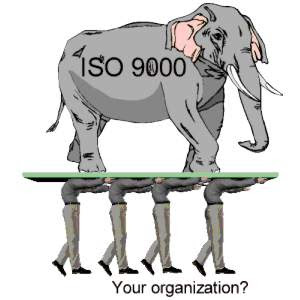Since language services are not required by all businesses in order for them to perform in their local markets, they are not perceived as vital services by most business owners. Financial services, insurance, office equipment and furniture, marketing, and advertising are usually considered vital to all businesses. As a service used only by companies either engaging in international sales or actively marketing to ethnic markets domestically, language service providers are not as well known in the U.S domestic market. Due to this fact and the increasingly technical nature of translation and localization work, there is a growing asymmetry in knowledge between LSP’s and their existing and potential customers. This disconnect between service buyers and sellers is strong justification for LSP’s to attain certification. Since, to this day, there is no single standard that addresses translation quality, ISO 9000 certification serves as the best alternative 5.

Of course, if you look at the results of a translation project, you can assess if the work looks complete, professional, and was delivered on time. However, you still have no way of assessing the linguistic quality of the work. To do so, you will need to rely on someone in your organization such as an overseas sales office, distributor or even your customers. This process, known as client review, is common and necessary, since most buyers of translation services are not comfortable assuming that their LSP can provide quality work.
However, anyone working inside an LSP will tell you that even if the distributor/customer does not provide positive feedback, it does not necessarily mean that the translation is of poor quality. Why? Well, its language is always preferential and subjective. There is no way to objectively measure the quality of translation in its abstract meaning. Even if there was, the reviewers would have to be trained in that assessment process, which likely will not happen, since review at best will be a secondary task for the chosen reviewer. He or she will likely have primary duties that generate revenue directly for your company. So, that brings us back to the definition of quality as perceived by the buyer. That’s where the integrity comes in: being able to work with the buyer to establish those ever-elusive quality criteria as the basis for reasonable and realistic quality requirements. Such collaboration takes time and effort on both sides, but mainly on the provider’s side. This type of partnership is impossible without commitment and integrity and requires robust and detailed processes for which ISO ce certification can provide a solid framework.
From the buyer’s perspective purchasing language services is a daunting task. Unless you have knowledge of the languages into which your service provider is translating, you do not have any direct way of assessing the quality of the translation work. If you think about it, virtually any other product or service you and your company purchase can be evaluated and experienced directly. Purchasing technical services, such as software development,- lends itself to direct assessment, even if you have no knowledge of programming, since the end result can be assessed for functional quality.
Source: translationdirectory.com/articles
You can find more about other ISO Services here.